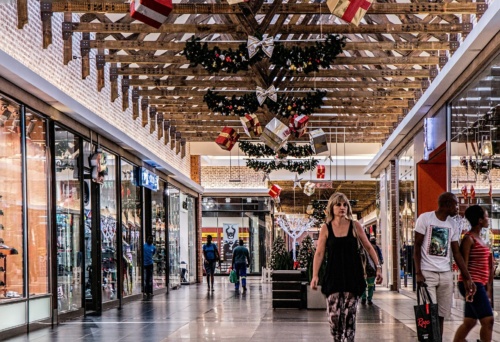There are now hundreds of videos online of intrepid urban explorers making their way through the cavernous remains of abandoned shopping malls and retail stores across Europe and North America. The videos have racked up hundreds of thousands of views and it is hard not to hold your breath as the explorers (or depending on your perspective, trespassers) tip toe through the dark and gloomy malls, which were once bright, bustling hives of activity and commerce.
Shopping malls and physical retail stores were once thought to be an incredibly solid investment and for a few decades around the turn of the 21st century, it seemed like developers could hardly build enough malls and shops to keep up with demand. Now, however, much of that has changed.
Earlier this year, the UK commercial landlord British Land revealed that only 46% of rents due from retail tenants had been paid for the last year, in comparison with 95% paid from office tenants for the same time period. The news has also been flooded with stories about retail chains collapsing that had once seemed invincible. The sale of the Arcadia Group to ASOS seemed to represent a larger shift in the commercial world as digital not-so-slowly takes over brick and mortar.
That being said, eventime restrictions were loosened over the course of the last 18months, there was a mammoth increase in sales for purely brick and mortar shops. Many stores like Primark, JD Sports and IKEA had lines that wrapped around the building. The reality of shopping is not so simple or clear cut as highstreet dying, instead, a more interesting, blended form of shopping is rising from the ashes of shopping malls.
Digital innovation leads the way
Many highstreet strategists are looking to digital innovation to attract new and excited shoppers to stores across the UK. Online retailers like ASOS, Amazon and Shein have forced brick and mortar retailers to innovate quickly.
Many of the retailers who have had the most success with digital innovation have focused on creating easy to use and navigate ecommerce platforms. They have also introduced options for shoppers to pick up the clothes they buy online. Not only does this bring shoppers into the brick and mortar stores, where they will have exposure to other new products,it also gives shoppers more control over their shipping options and allows them more freedom when deciding how to get their clothing.
An industry case study which retail can look to when strategizing is the online casino industry. This industry has managed to develop a flourishing online following while brick and mortar casinos still retain their popularity. Online gambling platforms such as this online casino provide gamblers with an extensive game library and live dealer options. Highstreet companies can look to how online casinos have managed to mimic the experience of gambling in person, while still appreciating the unique experience which gambling in a brick and mortar casino provides.
Creating the ultimate shopping experience
Another exciting development in the retail industry is the introduction of experience-based shopping. If you have visited a large shopping mall, Primark or Sephora recently, you may have noticed that there are suddenly different types of activities for shoppers to enjoy. Shoppers at select Primark stores can get a manicure, have their eyebrows shaped and buy a coffee all inside the store.
Other stores offer professional makeup, small restaurants, independent florist stalls and more. The strategy appears to be working as visiting a large mall or store allows busy shoppers to get everything on their list while also having fun, enjoying an experience and turning the entire shopping process into something much more exciting and engaging than a sprint from store to store.
As retail continues to shrink across the UK, it is likely that large shops, and shops within shops, will proliferate because it allows shoppers to enjoy a series of experiences and also provides the convenience of one stop shopping.
Adaptation is the key to success
While it is impossible to know what the future holds, the retailers which are the best at trialling and launching new, innovative ways to shop and shopping experiences will likely be the most successful.
Consumer interests and demands are very mercurial and it is important for retailers to be able to keep up with how consumer tastes change – and how the ways we shop change. eCommerce and online shopping is not going anyway, so the stores which are the best at adapting to these changeswill likely be the strongest future retailers.





